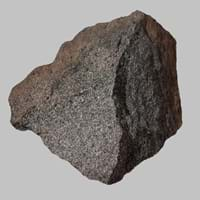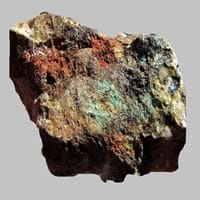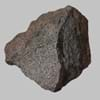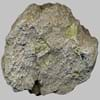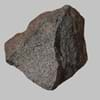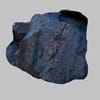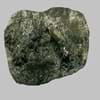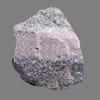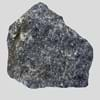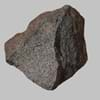Definition
Larvikite is an igneous rock and a variety of monzonite, notable for the presence of thumbnail-sized crystals of feldspar
Jasperoid is a rare, peculiar type of metasomatic alteration of rocks
Origin
Larvik, Norway
USA
Discoverer
Unknown
Unknown
Etymology
From the town of Larvik in Norway, where this type of igneous rock is found
From silica, the main mineral content of Jasperoid
Class
Igneous Rocks
Sedimentary Rocks
Sub-Class
Durable Rock, Hard Rock
Durable Rock, Medium Hardness Rock
Group
Plutonic
Not Applicable
Other Categories
Coarse Grained Rock, Fine Grained Rock, Medium Grained Rock, Opaque Rock
Coarse Grained Rock, Fine Grained Rock, Medium Grained Rock, Opaque Rock
Texture
Phaneritic
Earthy
Color
Black, Brown, Light to Dark Grey, White
Black, Brown, Colourless, Green, Grey, Pink, White
Durability
Durable
Durable
Scratch Resistant
Yes
Yes
Appearance
Shiny
Glassy or Pearly
Interior Uses
Decorative Aggregates, Homes, Interior Decoration
Decorative Aggregates, Floor Tiles, Homes, Interior Decoration
Exterior Uses
As Building Stone, As Facing Stone, Garden Decoration, Office Buildings, Paving Stone
As Building Stone, Garden Decoration, Office Buildings, Paving Stone
Other Architectural Uses
Curbing
Curbing
Construction Industry
As Dimension Stone, Cement Manufacture, Construction Aggregate, for Road Aggregate
As a Flux in the Production of Steel and Pig Iron, As a Sintering Agent in Steel Industry to process Iron Ore, As Dimension Stone, Cement Manufacture, for Road Aggregate, Making natural cement, Manufacture of Magnesium and Dolomite Refractories, Production of Glass and Ceramics, Serves as an Oil and Gas Reservoir rock
Medical Industry
Not Yet Used
Taken as a Supplement for Calcium or Magnesium
Antiquity Uses
Artifacts, Monuments, Sculpture
Artifacts, Jewellery, Monuments, Sculpture
Commercial Uses
Cemetery Markers, Commemorative Tablets, Creating Artwork
An Oil and Gas Reservoir, As a Feed Additive for Livestock, Gemstone, Metallurgical Flux, Production of Lime, Soil Conditioner, Source of Magnesia (MgO)
Types
Quartz Monzonite, Syenite and Diorite
Not Available
Features
Available in lots of colors, Is one of the oldest rock
Host Rock for Lead, Traps for subsurface fluids like Oil and Natural Gas., Zinc and Copper Deposits
Archaeological Significance
Famous Monuments
Data Not Available
Data Not Available
Famous Sculptures
Data Not Available
Data Not Available
Pictographs
Not Used
Used
Petroglyphs
Not Used
Used
Formation
Larvikite is a fine-grained, hard rock which is a type of metasomatite, essentially altered basalt. It forms with or without crystallization, either below the surface as intrusive rocks or on the surface as extrusive rocks.
Jasperoid is a rare and peculiar type of metasomatic alteration of rocks. It is formed by extreme alteration of wall rocks within a shear zone which may occur in sediments, andesites, trachytes and basalts.
Mineral Content
Albite, Amphibole, Apatite, Biotite, Feldspar, Hornblade, Ilmenite, Magnetite, Muscovite or Illite, Olivine, Plagioclase, Pyroxene, Quartz, Sulfides, Titanite, Zircon
Clay Minerals, Pyrite, Quartz, Sulfides
Compound Content
Aluminium Oxide, CaO, Iron(III) Oxide, FeO, Potassium Oxide, MgO, MnO, Sodium Oxide, Phosphorus Pentoxide, Silicon Dioxide, Titanium Dioxide
NaCl, CaO, Carbon Dioxide, Magnesium Carbonate, MgO
Types of Metamorphism
Cataclastic Metamorphism, Impact Metamorphism, Regional Metamorphism
Burial Metamorphism, Cataclastic Metamorphism, Regional Metamorphism
Types of Weathering
Biological Weathering, Chemical Weathering, Mechanical Weathering
Not Applicable
Types of Erosion
Chemical Erosion
Not Applicable
Grain Size
Medium to Fine Coarse Grained
Medium to Fine Coarse Grained
Fracture
Not Available
Conchoidal
Porosity
Less Porous
Less Porous
Luster
Subvitreous to Dull
Vitreous and Pearly
Cleavage
Not Available
Perfect
Toughness
Not Available
1
Specific Gravity
2.8-3
2.8-3
Transparency
Opaque
Transparent to Translucent
Density
2.9-2.91 g/cm3
2.8-2.9 g/cm3
Resistance
Heat Resistant, Impact Resistant, Pressure Resistant
Heat Resistant, Pressure Resistant, Wear Resistant
Deposits in Eastern Continents
Asia
Not Yet Found
China, India
Africa
Not Yet Found
Morocco, Namibia
Europe
Bulgaria, England, Germany, Norway, Romania, Switzerland
Austria, Italy, Romania, Spain, Switzerland
Others
Not Yet Found
Not Yet Found
Deposits in Western Continents
North America
USA
Mexico, USA
South America
Argentina, Bolivia, Brazil, Chile, Colombia, Ecuador, Peru
Brazil, Colombia
Deposits in Oceania Continent
Australia
New South Wales, New Zealand, Queensland, South Australia, Western Australia
New South Wales, Queensland, Yorke Peninsula
All about Larvikite and Jasperoid Properties
Know all about Larvikite and Jasperoid properties here. All properties of rocks are important as they define the type of rock and its application. Larvikite belongs to Igneous Rocks while Jasperoid belongs to Sedimentary Rocks.Texture of Larvikite is Phaneritic whereas that of Jasperoid is Earthy. Larvikite appears Shiny and Jasperoid appears Glassy or Pearly. The luster of Larvikite is subvitreous to dull while that of Jasperoid is vitreous and pearly. Larvikite is available in black, brown, light to dark grey, white colors whereas Jasperoid is available in black, brown, colourless, green, grey, pink, white colors. The commercial uses of Larvikite are cemetery markers, commemorative tablets, creating artwork and that of Jasperoid are an oil and gas reservoir, as a feed additive for livestock, gemstone, metallurgical flux, production of lime, soil conditioner, source of magnesia (mgo).
